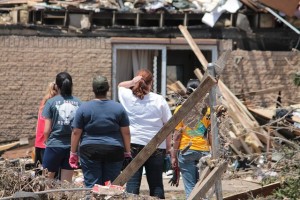Widgetized Section
Go to Admin » Appearance » Widgets » and move Gabfire Widget: Social into that MastheadOverlay zone
The Cost of Disasters
The views expressed are those of the author and do not necessarily reflect the views of ASPA as an organization.
By Richard Clay Wilson, Jr.
April 5, 2016
 Disasters—natural and man-made—are an everyday part of human existence. In retrospect it is always clear how each one could have been anticipated and prepared for better. But probability is against each such event happening in the short term. It is a given that political attention follows, but does not precede, each disaster.
Disasters—natural and man-made—are an everyday part of human existence. In retrospect it is always clear how each one could have been anticipated and prepared for better. But probability is against each such event happening in the short term. It is a given that political attention follows, but does not precede, each disaster.
It seems fair to credit government’s disaster-responding agencies—local, state and federal—for responses that, by and large, accomplish their goals. That is: most disasters are handled well enough to avoid untoward political consequences. Large-scale disasters are another matter, as they often demand more than the disaster response system is prepared to handle.
Government spending related to disasters falls into three categories. The first is pre-disaster, precautionary spending. Activities such as the application of building codes, the construction and management of storm drains and river levees, weather forecasting and other such measures fall into this category. Spending for disaster avoidance and mitigation in advance of such events is widely regarded as highly efficacious.
Accordingly, modest expenditures in the first category have long been staples in government budgets. But it is easier to know what should be done than who should do it. Government does not want to do what private parties would otherwise do and private parties do not want to do what government would do for them. Moreover, the benefits of disaster avoidance and mitigation spending are certain to accrue to society as a whole, but much less likely to accrue to individual government entities, much less individual private parties.
The second category of disaster spending is for aid in the immediate aftermath of disaster. Activities such as rescue, food and medicine provision and deploying police, fire and other responders fall in this category. Government spending in this second category is also economically efficacious and enjoys widespread popular support. Even those whose theories of government might dictate otherwise have a hard time objecting, in the midst of suffering, to helping the disaster stricken.
The great bulk of government spending comes in the second category. Many of those who study such things argue that increased spending in the first category would be more than offset by decreased costs in the second one. But as laudable and cost-effective as it might be to reduce the cost of aiding future victims through disaster avoidance and mitigation, it is far easier to defer costs to the future than bear them in the present. Even if disaster assistance costs could have been reduced, they remain economically sound.
The case for economic efficaciousness in the third category of spending—disaster recovery—is another matter. To start, it is difficult, if not impossible, to postulate, case by case, what would have happened in the absence of government’s economic contributions to recovery. Private funds might, or might not, have met most or part of the needs.
Another consideration is the inevitable fact that politically well-connected jurisdictions fare better at obtaining disaster recovery funds than less well-connected jurisdictions. It is a given that disaster-stricken jurisdictions must do everything they can to maximize presidential- and governor-level attention and commitments, knowing as they do that it is far easier to obtain promises when things are bleak than to obtain the goods promised when the urgency has subsided.
I have considerable experience with disaster programs and spending. I was the city manager of Santa Cruz, Calif., for 29 years, during which time we suffered five presidential-declared disasters. The worst was the 1989 Loma Prieta Earthquake, which killed 63 people and caused $6 billion in property damage in Northern California. Our local downtown was leveled by that earthquake and three were killed. Response and recovery were long-term, life-changing responsibilities for everyone involved.
Many millions of dollars in local, state and federal funds were forthcoming in the aftermath of that earthquake. Our city’s downtown is now a vibrant success. San Francisco has had an equally positive recovery. Oakland, on the other hand, has not fared nearly as well.
Given the robust economy of the greater San Francisco Bay area, the costs of disaster recovery after the Loma Prieta Earthquake seem, by and large, to have borne fruit. My personal assessment is that in the absence of the extraordinary assistance that came our way, downtown Santa Cruz would not have experienced recovery and resurgence in either the short- or medium-term. The obstacles were too formidable and the costs too great. In the long term, however, it seems unlikely that the Santa Cruz downtown would have remained moribund. Because such unknowns loom large in every event, the economic return on disaster recovery assistance cannot be satisfactorily measured.
In the end, then, the cases for public spending to avoid and mitigate future disasters, and for immediate assistance to disaster victims, are much stronger than the case for recovery aid. Government entities and officials fortunate enough to benefit from recovery assistance have a special duty to use those funds wisely and well. When they don’t, they put future recovery funding in serious jeopardy.
Author: Richard Clay Wilson, Jr., is a retired city manager with 38 years of local government experience. He is the author of the book, Rethinking Public Administration: The Case for Management, the second edition of which was published in January 2016 by Melvin & Leigh. Email: [email protected].


Follow Us!